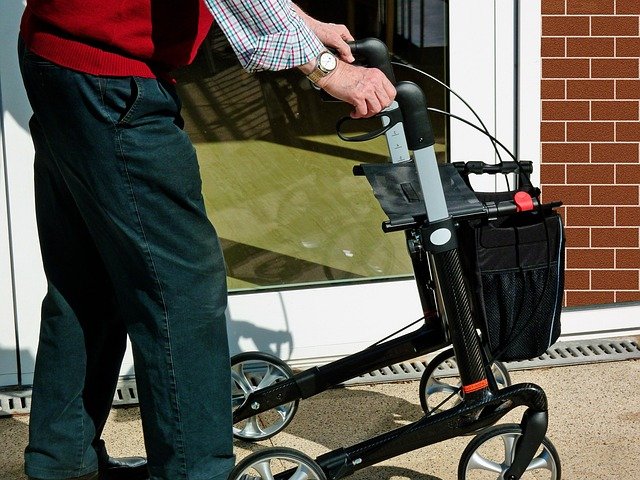Mobile Stair Lifts Without Installation: Safe, Simple, and Ready to Use
For many people with limited mobility, stairs can be a daily challenge. Whether due to age, injury, or a health condition, navigating up and down steps isn’t always safe — or even possible. That’s where mobile stair lifts without installation come in.

Mobility challenges shouldn’t confine anyone to a single floor of their home. Traditional stair lifts require extensive installation, structural modifications, and significant financial investment. However, mobile stair lifts present a revolutionary alternative that addresses these concerns while maintaining safety and functionality. These devices provide immediate accessibility solutions without the permanence or complexity of conventional systems.
What Are Mobile Stair Lifts and How Do They Work?
Mobile stair lifts are portable devices designed to assist individuals in safely navigating stairs without requiring permanent installation. Unlike traditional rail-mounted systems, these units operate independently using battery power and innovative engineering. The devices typically feature a seat or platform that moves along a temporary track or uses caterpillar-style treads to climb stairs. Advanced models incorporate sophisticated balance systems and safety sensors that automatically adjust to different stair dimensions and angles. The user simply positions the device at the bottom of the stairs, secures themselves in the seat, and activates the motorised system that smoothly transports them upward or downward.
Benefits of No-Installation Stair Lift Solutions for Seniors
The primary advantage of installation-free stair lifts lies in their immediate availability and flexibility. Seniors can begin using these devices within hours of delivery, eliminating lengthy waiting periods for professional installation. This immediacy proves crucial during recovery periods following surgery or sudden mobility changes. The portability factor allows users to transport the device between different locations, making it ideal for visiting family or temporary living situations. Additionally, rental properties and listed buildings often restrict permanent modifications, making mobile solutions the only viable option. The absence of structural changes preserves property value and eliminates concerns about damage to walls, banisters, or flooring.
Choosing the Right Portable Devices for Home Mobility
Selecting an appropriate mobile stair lift requires careful consideration of individual needs and home specifications. Weight capacity represents a critical factor, with most devices supporting between 120kg to 160kg. Stair width and configuration significantly impact device compatibility, as some models work exclusively on straight staircases while others accommodate curves and landings. Battery life varies considerably between models, with premium units offering up to 20 trips per charge. Storage requirements differ substantially, with some devices folding compactly while others require dedicated space. Users should also consider the learning curve associated with operation, as some models feature intuitive controls while others require more technical understanding.
Safety Features of Mobile Stair Lifts
Modern mobile stair lifts incorporate comprehensive safety systems designed to prevent accidents and ensure user confidence. Automatic braking systems engage immediately if obstacles are detected or if the device encounters unexpected resistance. Anti-tip mechanisms prevent the unit from overbalancing during operation, while secure harness systems keep users properly positioned throughout the journey. Emergency stop buttons provide immediate control in unexpected situations, and backup battery systems ensure functionality during power outages. Many models include communication devices that allow users to call for assistance if needed. Regular safety checks and maintenance protocols help ensure continued reliable operation.
Comparing Top Mobile Stair Lift Options on the Market
The mobile stair lift market features several established manufacturers offering varying approaches to portable accessibility. Current market leaders include companies specialising in rehabilitation equipment and mobility aids, each presenting unique technological solutions.
| Product Type | Provider | Key Features | Cost Estimation |
|---|---|---|---|
| Tracked Mobile Lift | HME Mobility | Battery powered, 136kg capacity, foldable design | £3,500 - £5,000 |
| Caterpillar Stair Climber | Scalamobil | Lightweight, operates with assistant, 160kg capacity | £4,000 - £6,500 |
| Portable Seat Lift | Bruno Independent Living | Self-contained unit, straight stairs only, 113kg capacity | £2,800 - £4,200 |
| Multi-Configuration Device | Handicare | Adaptable to various stair types, 140kg capacity | £3,800 - £5,800 |
Prices, rates, or cost estimates mentioned in this article are based on the latest available information but may change over time. Independent research is advised before making financial decisions.
The landscape of mobile stair lifts continues evolving as manufacturers respond to growing demand for flexible accessibility solutions. These devices represent a significant advancement in mobility technology, offering immediate relief for individuals facing stair navigation challenges. While not suitable for every situation, mobile stair lifts provide an invaluable alternative to permanent installation systems. The combination of safety features, portability, and user-friendly operation makes these devices increasingly attractive to those seeking to maintain independence without compromising their living environment. As technology advances and manufacturing costs decrease, mobile stair lifts are likely to become even more accessible and sophisticated, further expanding their role in home mobility solutions.




